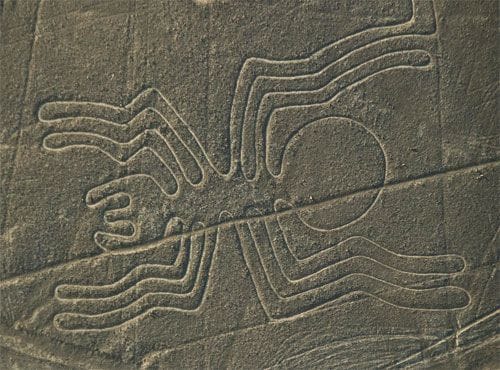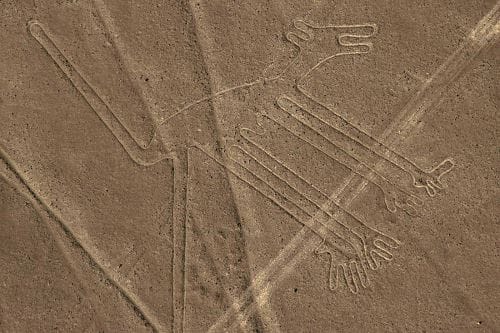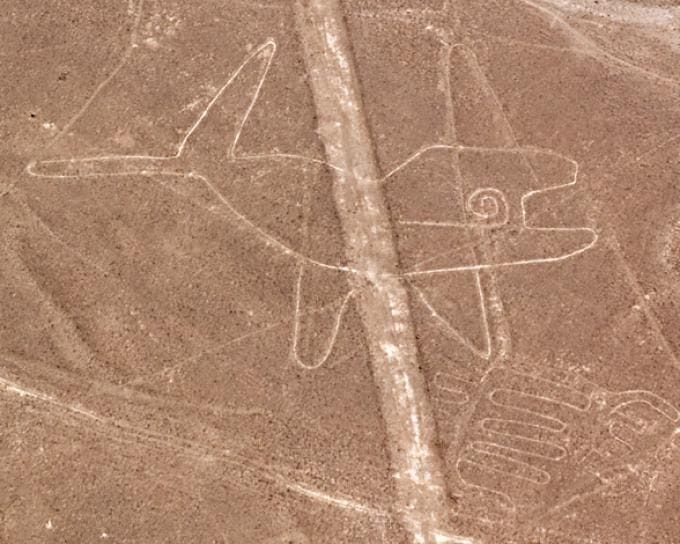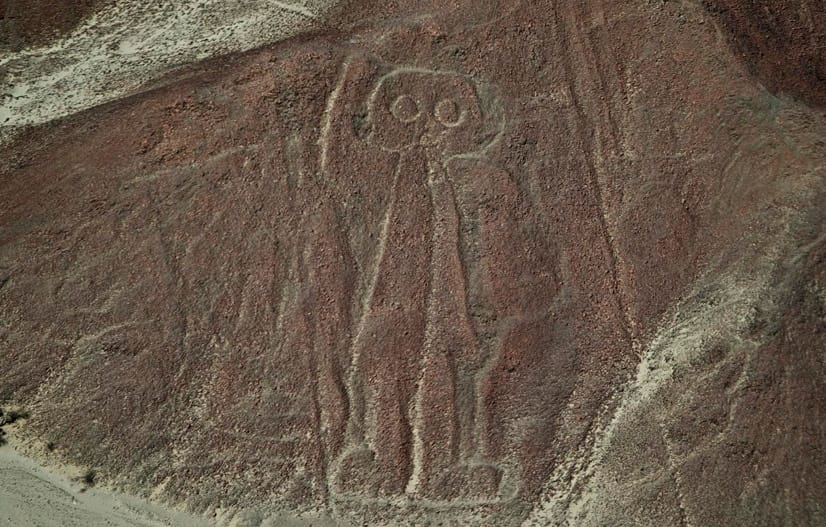In the arid and vast desert of southern Peru lies one of the greatest archaeological mysteries in the world: the Nazca Lines. These ancient figures, etched into the earth’s surface, have puzzled scientists, archaeologists, and travelers for generations. How were they made? What do they mean? How have they remained intact for so many centuries?
Here, we tell you everything you need to know about this impressive cultural legacy that continues to challenge our understanding of the past.

Where Are the Nazca Lines Located?
The Nazca Lines are located in the Ica region, specifically between the towns of Nazca and Palpa, on the Jumana plains. This area of the Peruvian desert spans hundreds of square kilometers and is famous for its extremely dry climate, with very little rainfall throughout the year. This climate has been key to preserving the lines for centuries.
What Do the Nazca Lines Represent?
The Nazca Lines are not just simple drawings. They are massive figures (also called geoglyphs) that include geometric shapes, animals, plants, and still-undeciphered symbols. Many of them can only be fully appreciated from the sky due to their large scale. Among the most famous are:
The Hummingbird
An elegant and symmetrical figure stretching over 90 meters. It is one of the most iconic symbols of the collection.

The Monkey
With a spiral tail, this figure measures around 135 meters. Its stylized form has drawn the attention of many researchers.

The Spider
Considered a symbol of fertility or a connection to rain. Its lines are thin but precise, and it spans over 40 meters.

The Dog
A lesser-known but equally intriguing figure, with simple proportions and fine lines.

The Whale
With a geometric design that stands out, this figure appears to represent a whale or marine creature.

The Astronaut
Also known as “the anthropomorphic figure,” it’s popularly called “the astronaut” due to its appearance. It is drawn on a hillside and appears to be gazing at the sky.

How Were the Nazca Lines Created?
The lines were made using a surprisingly simple yet effective technique: removing the dark stones from the desert’s surface to expose the lighter-colored soil underneath. This contrast creates the visible shapes of the figures.
The most impressive part is that the ancient Nazca people created these designs without aerial view assistance, using ropes, stakes, and advanced knowledge of proportions.
When Were the Lines Made?
It is believed the Nazca Lines were created between 500 BC and 500 AD, during the height of the Nazca culture. Some of the more recent figures may have been made by later cultures such as the Paracas.
This makes them structures over 2,000 years old that have withstood time and weather thanks to the desert’s extreme conditions.
What Do the Nazca Lines Mean?
The true purpose of the lines is still debated, but several theories exist:
- Astronomical calendar: Some lines align with solar or lunar events, suggesting they were used for astronomical observation.
- Water worship: In such an arid region, it’s believed the figures may have played a role in rituals to invoke rain.
- Ceremonial maps: Some researchers think they were ritual paths or markers for religious ceremonies.
- Alternative theories: More modern and unconventional ideas suggest extraterrestrial origins, though these lack scientific support.
How Can You See the Nazca Lines?
The best way to view the lines is from the air. There are three main options:
Nazca Airstrip: Offers short 30-minute flights with views of more than 10 figures.
Pisco Airport: Ideal for those coming from Lima, with flights that include transfers and full tourist experiences.
Ground Viewpoints: Though limited, there are observation towers where a few figures can be seen from land.
Important: If you plan to fly, wear light clothing and be prepared for a bit of turbulence—the plane’s turns to show the lines can cause motion sickness!

Are the Nazca Lines a World Heritage Site?
Yes. In 1994, UNESCO declared the Nazca and Palpa Lines and Geoglyphs a World Cultural Heritage Site, recognizing their historical, cultural, and scientific value to the world.
What Should I Know Before Visiting?
- Book in advance: Flights are limited, especially in high season.
- Buy from certified agencies: Make sure the plane operator meets safety regulations.
- Bring sunscreen, sunglasses, and a hat: The desert sun is very intense.
- Camera with good zoom or a phone with good stabilization
- Avoid heavy meals before the flight
Did You Know…?
- In recent years, drones and satellite scanning have helped discover over 100 new figures previously unknown.
- Some figures are over 300 meters long—almost the size of three football fields!
- The mystery continues: no definitive answer has been found about how the Nazca achieved such precision without modern technology.




